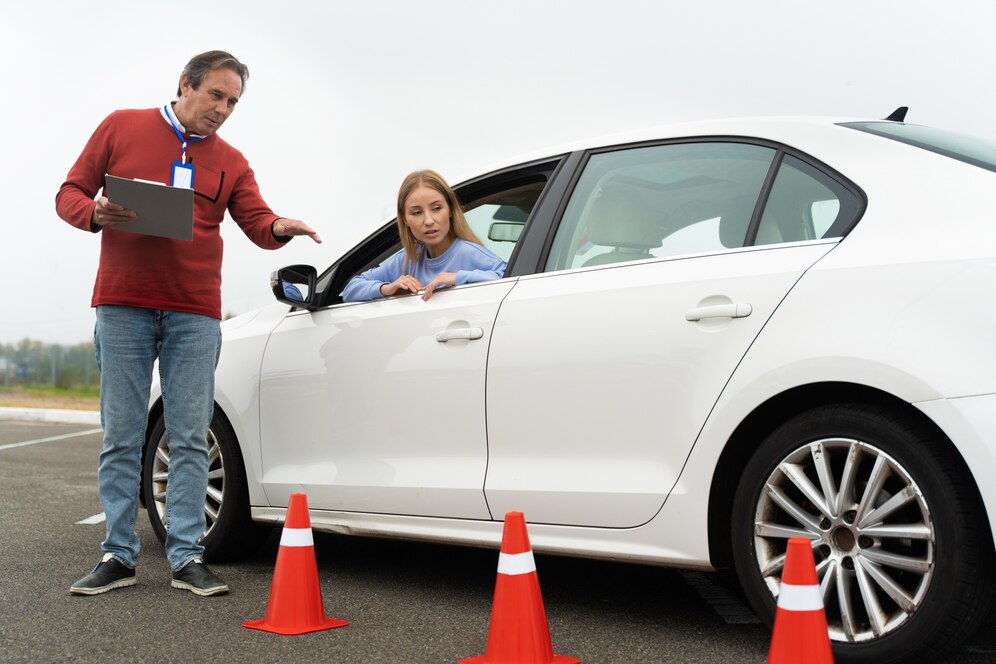How to Handle Roadside Emergencies Like a Pro—Trusted Driving Academy in Surrey, BC
Stay Cool, Stay Safe – Your Roadside Game Plan
Picture this: You’re cruising down the road, enjoying the drive, when suddenly—bam! A tire blows out, your car starts smoking, or you hear that dreaded sputter of a dying engine. It’s easy to panic, but staying calm and knowing what to do can make all the difference. Whether you're a seasoned driver or just starting out, handling roadside emergencies like a pro is a skill every driver needs. As a trusted driving academy in Surrey, BC, we know that real-world driving goes beyond just passing a test. Unpredictable situations happen, and being prepared can help you stay safe while avoiding unnecessary stress. That’s why we’ve put together this essential guide to help you tackle roadside emergencies with confidence.

1. Flat Tire? No Sweat!
A flat tire is one of the most common roadside issues, but it’s also one of the easiest to handle if you know what to do.
What to Do:
- Pull over safely. Find a level, stable area away from traffic and turn on your hazard lights.
- Use wheel wedges. Place them in front or behind the tires to prevent rolling.
- Loosen the lug nuts first. Before lifting the car with a jack, use a wrench to loosen (but not remove) the lug nuts.
- Jack up the car. Position the jack under the car’s designated jack points and raise it just enough to remove the tire.
- Swap the tire. Remove the lug nuts, take off the flat, and mount the spare. Tighten the lug nuts in a crisscross pattern for even pressure.
- Lower the car and finish tightening. Double-check that everything is secure before driving off.
If changing a tire on the roadside feels unsafe, call for roadside assistance or a professional service.
2. Dead Battery? Here’s Your Jumpstart Guide
Nothing’s worse than turning the key and hearing… nothing. A dead battery can leave you stranded, but if you have jumper cables and a willing helper, you’re back on the road in minutes.
What to Do:
- Grab jumper cables and a functioning car. If you don’t have cables, this is where emergency roadside kits come in handy.
- Turn off both cars. Safety first—make sure everything is powered down.
- Connect the cables in this order:
- Red clamp to the dead battery’s positive terminal.
- Red clamp to the good battery’s positive terminal.
- Black clamp to the good battery’s negative terminal.
- Black clamp to an unpainted metal surface on the car with the dead battery (not directly on the battery).
- Start the working car first. Let it run for a couple of minutes, then try starting the dead car.
- Once it starts, remove the cables in reverse order. Keep the jumped car running for at least 15 minutes to recharge the battery.
3. Engine Overheating? Cool It Down
If you see steam coming from under the hood, your engine is overheating. Ignoring this can lead to serious damage, so act fast.
What to Do:
- Turn off the AC. Running the air conditioning puts extra strain on the engine. Switch it off and turn on the heater instead—this helps draw heat away.
- Pull over and let the engine cool. Never open the radiator cap when the engine is hot.
- Check coolant levels. If low, add coolant once the engine has cooled down completely.
- Look for leaks. If you see fluid under the car, you might have a leak that needs professional repair.
4. Brake Failure? Don’t Panic!
Brake failure is rare but terrifying. If your brakes stop responding, here’s what to do:
What to Do:
- Pump the brakes. If you have an older car without anti-lock brakes, quickly pump the pedal to build pressure.
- Downshift to lower gears. This helps slow the car down naturally.
- Use the emergency brake gradually. Don’t yank it—apply it slowly to avoid skidding.
- Steer to safety. Look for a safe place to roll to a stop, such as an open shoulder or an empty parking lot.
5. Locked Out? Here’s Your Plan
Getting locked out of your car is frustrating, especially if your keys are staring at you from the driver’s seat. Before you break a window, try these solutions:
What to Do:
- Check for unlocked doors or windows. It sounds obvious, but in a rush, you might overlook an open passenger door.
- Call a friend with a spare key. If you have a backup key at home or with a family member, that’s the fastest solution.
- Use a roadside assistance service. If you’re part of a trusted driving academy in Surrey, BC, you may have access to roadside assistance programs.
6. Car Won’t Start? Try These Quick Fixes
If your engine won’t turn over and it’s not a dead battery, here are some other culprits:
What to Do:
- Check fuel levels. Sometimes, the problem is as simple as an empty tank.
- Inspect the key fob. If you have a push-start car, a dead key fob battery can prevent it from starting.
- Listen for a clicking sound. If you hear clicking but the engine won’t start, your starter might need replacement.
Drive With Trusted Driving Academy in Surrey – We’ve Got Your Back
Being prepared for roadside emergencies can turn a stressful situation into a manageable one. Keeping an emergency kit, staying aware of your surroundings, and knowing what steps to take can make all the difference.
At our driving academy, we don’t just teach you how to drive—we equip you with real-world skills to handle the unexpected. If you're looking for a trusted driving academy in Surrey, BC, to boost your confidence behind the wheel, we’re here to help. Whether you're learning to drive or refreshing your skills, we’ve got the training and expertise you need to stay safe on the road.
Trusted Driving Academy in Surrey | Trusted Driving Academy in Surrey |Trusted Driving Academy in Surrey | Trusted Driving Academy in Surrey | Trusted Driving Academy in Surrey | Trusted Driving Academy in Surrey | Trusted Driving Academy in Surrey




